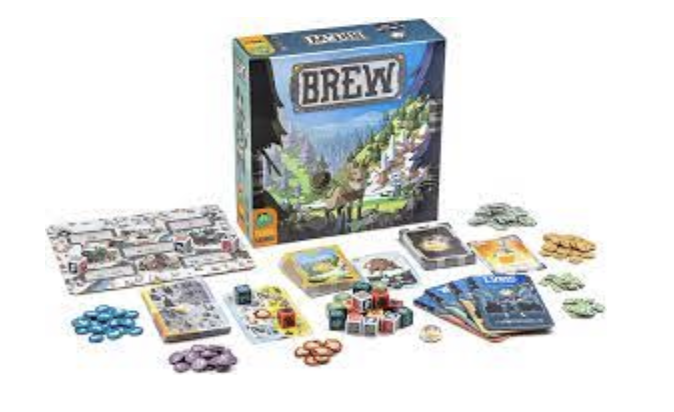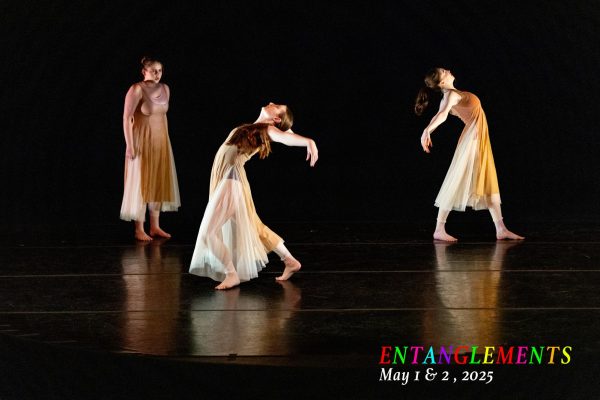Never Bored With Board Games: Brew
Brew
Difficulty level: 4
Play Time: 50-90 minutes
Number of Players: 2-4
Recommended age: 11+
If you are the kind of person who likes to strategize five turns ahead of everyone else, then Brew is the game for you. Brew is possibly one of the best board games to ever center around dice rolling. In Brew, each player tries to score the most points by collecting potions, forests, animals, and resources. Potions can be used one time after being bought from the store. All potions alter the placement of dice but in different ways (to be explained later). Some creatures offer bonuses when you place dice in specific areas, while others provide new spaces for dice to be placed.
Setting up Brew is relatively simple. First, set out the village board so that the day side is face up (there is also a night side). Then, set the creature and potion decks around it. Flip the top four potions over so that everyone can see them (they are now in the shop). Split the entire creature deck into the four respective season piles (there are winter, summer, spring, and fall creatures). After that, flip over a number of forests equal to the number of players plus one. Each forest features either one or two seasons. If a forest has both winter and summer, then all parts of the forest are both winter and summer at the same time. Finally, give each player a character board and an energy berry.
There are four different resources in Brew: mushrooms, gems, herbs, and energy berries (which are wild resources). In each forest, there are three to five spaces on which you can play your dice. Brew uses six dice for each player. You get two elemental dice and four personal dice. On each elemental there are two fire, water, and wind symbols, respectively. On your personal dice, you have two rock, stick, and leaf symbols, respectively.
On your turn, although you have the option to brew a potion and drink a potion, you must place a die either on a forest, the village board, or a creature you control. Let’s say you decide to place a personal die that shows a rock on a forest space. First, you must find a space that also shows a rock. Then, once you place the die there, you must gather from that forest. When you gather, look at the symbol on the bottom right hand corner of the space where you placed the die and take the resource shown. If, however, there is a tooth, you get to train a creature instead (simply take a creature from the top of one of the piles and put it to the left of your character board). There are also spaces on the village board that you can place dice onto.
Each elemental symbol gives you a special bonus when played. When you use a water die in a forest, you get to gather two more resources than normal. You can only play a wind die on a spot in a forest where you already have one of your own dice. When you do, you have to return your personal die back to you (keep it face up because you will get to place it again) and then gather from the spot on which you just placed your wind die. Lastly, when placing the fire die you must place it on top of another die. You then gather from that spot. When gathering with an elemental die, you cannot gather from a spot where you would normally train a creature.
At the end of each round, all players must check whether or not they claimed any forests. To claim a forest, you must have the most personal dice in the forest (ties do not count). Additionally, since elemental dice, once played, do not belong to any player, they are considered their own team. For example, if I have two personal dice in a forest but there are also two elemental dice, nobody would claim that forest.
There is no strategy that you can stick to while playing Brew. Since the game essentially restarts after each round, you should decide how you play depending on what you roll. After you have rolled your dice, you should look at which forest best matches your dice. For example, if you rolled two sticks, a rock, and a leaf, you may want to go for control of a forest that has a lot of sticks. Another tip is to spend your resources carefully, since potions are often expensive but game-changing.
Brew is great because everything can change quickly. It may seem like one person is winning, but all it takes is one turn to switch dominance. The creators of Brew were careful enough to make sure that players can’t simply run away with the game. On the other hand, it is difficult to master this game because everything is always changing. Overall, Brew is both satisfying and engaging. The artwork is also extremely cute.
Winston Spreitzer ('24) is delighted to be returning as a staff writer to The Forum this year. In the past, he has written articles about rock climbing,...




















































